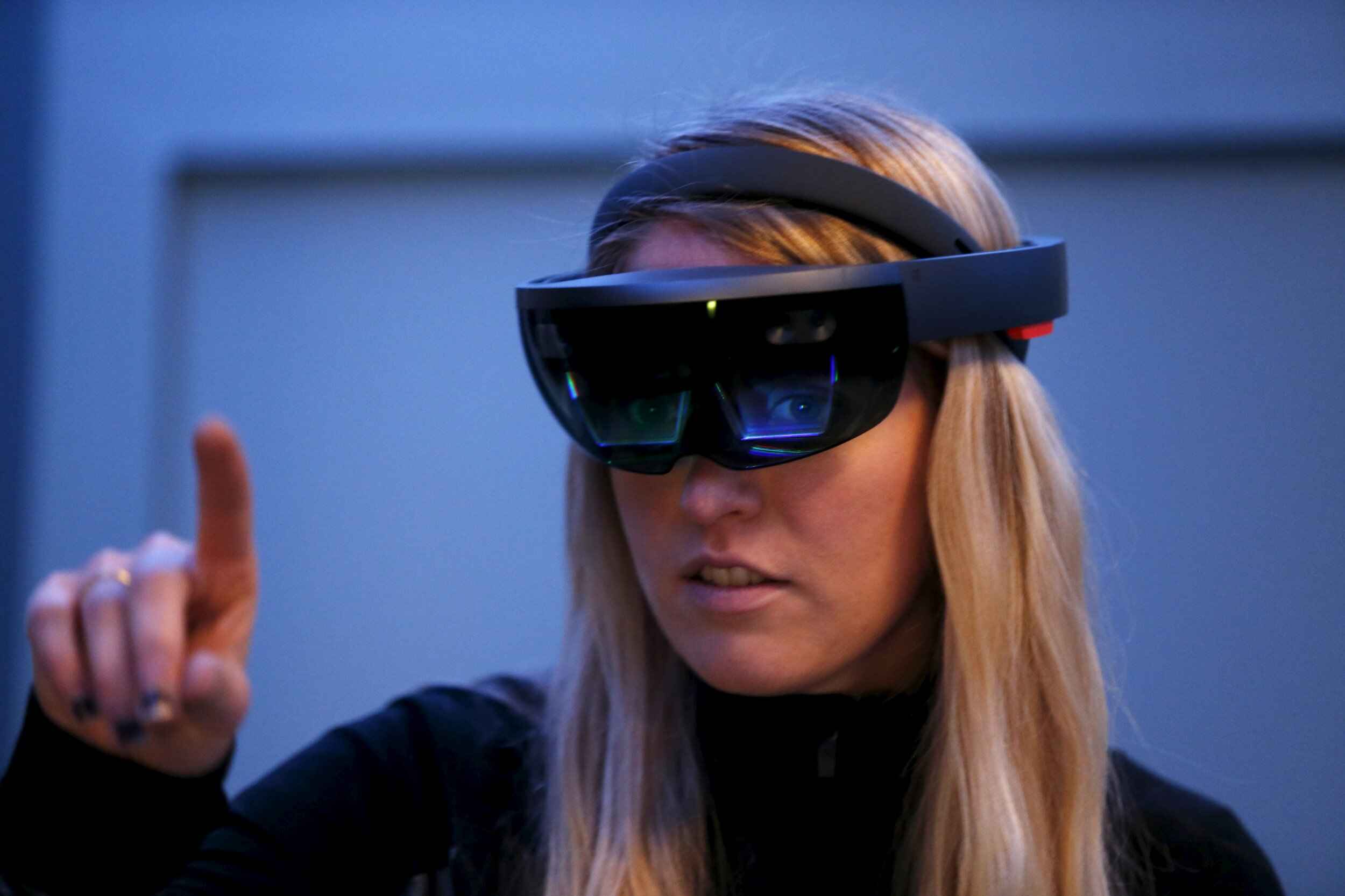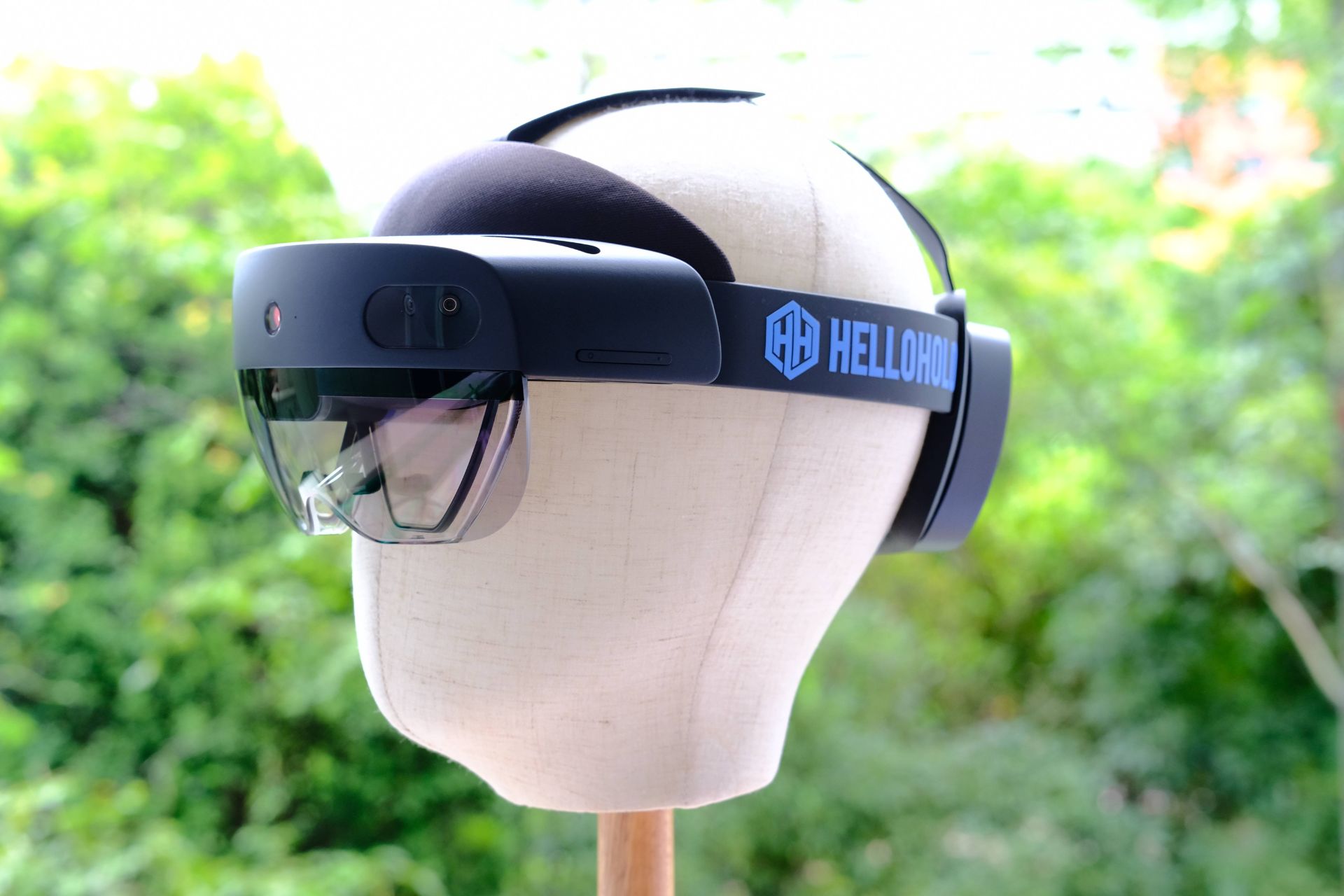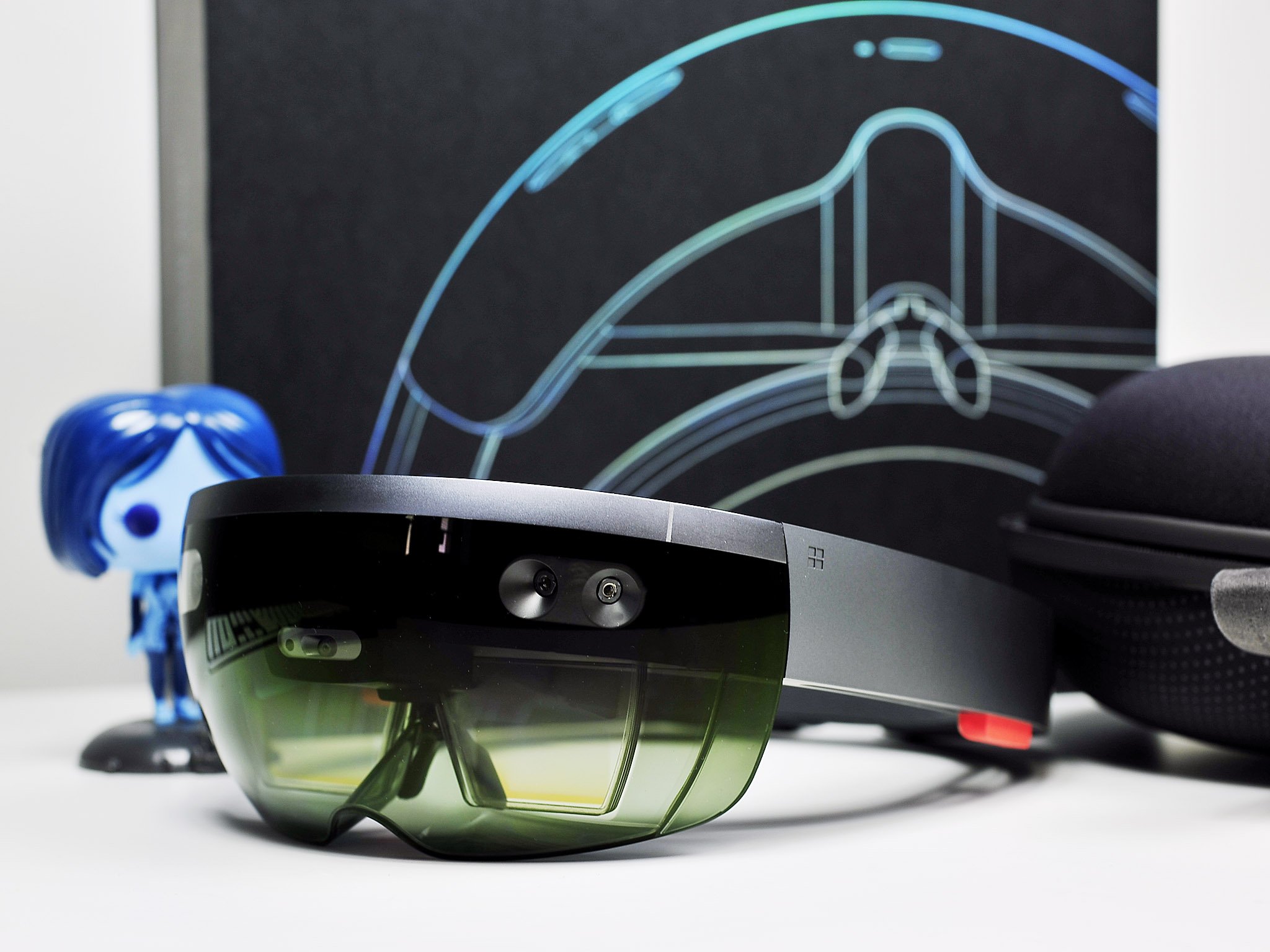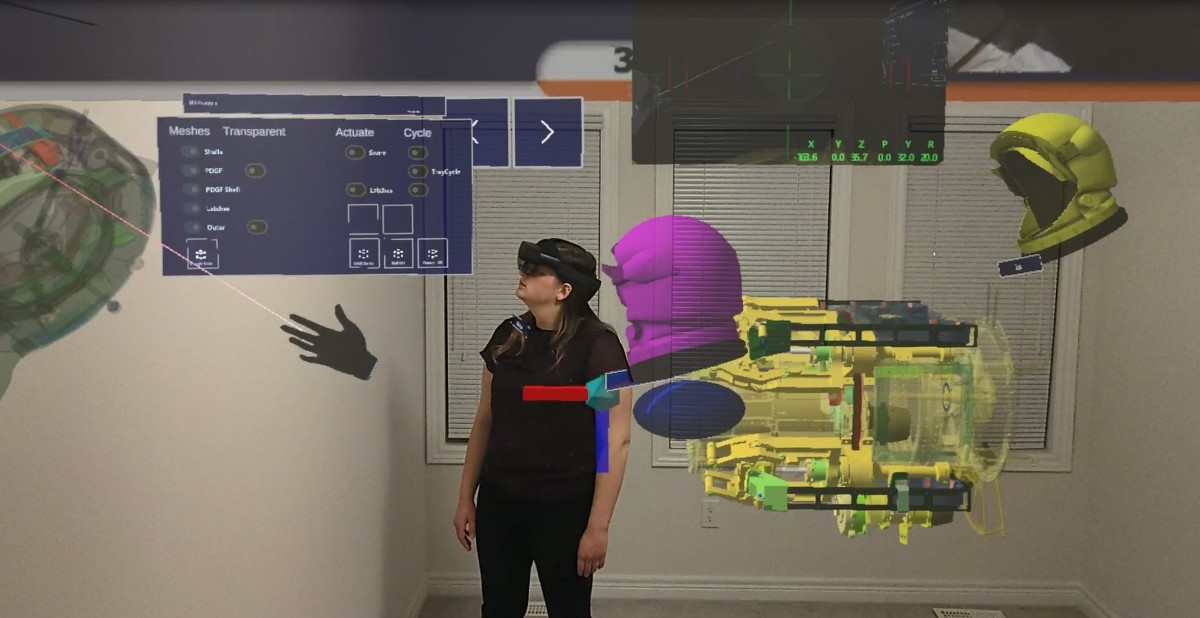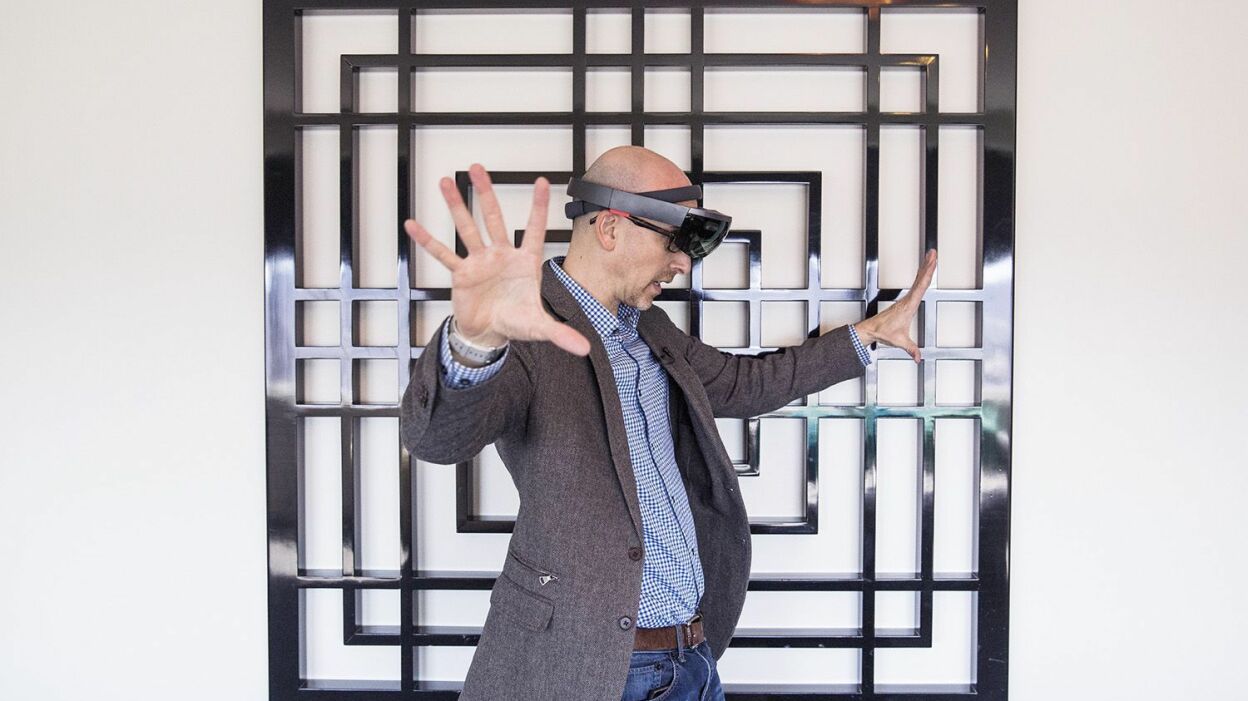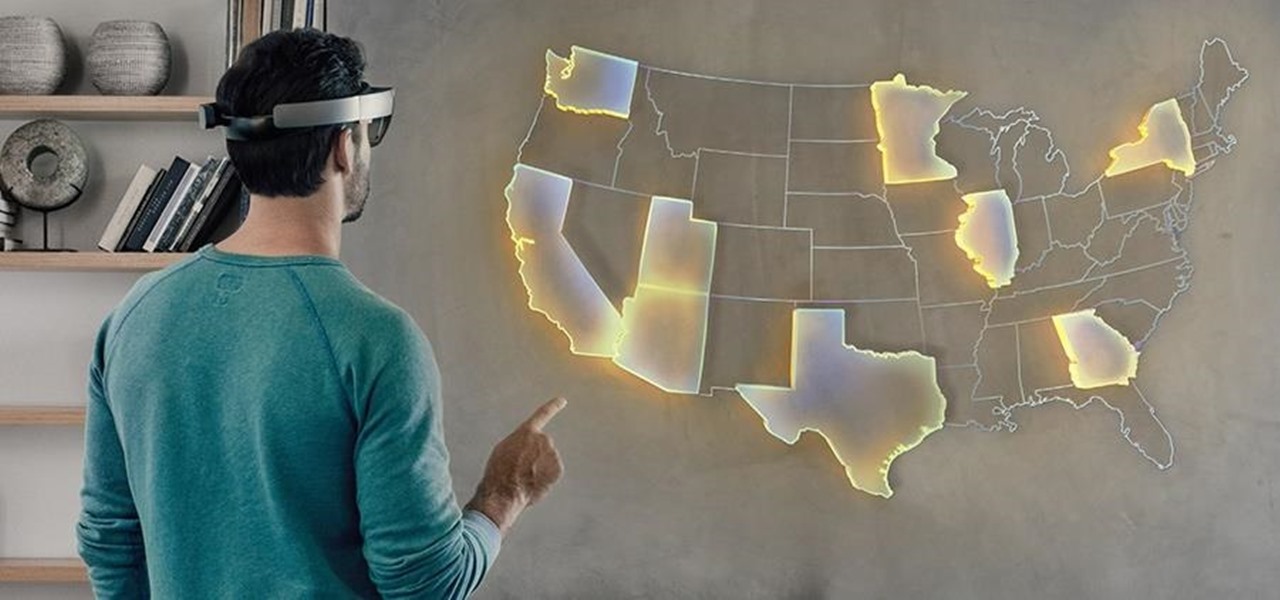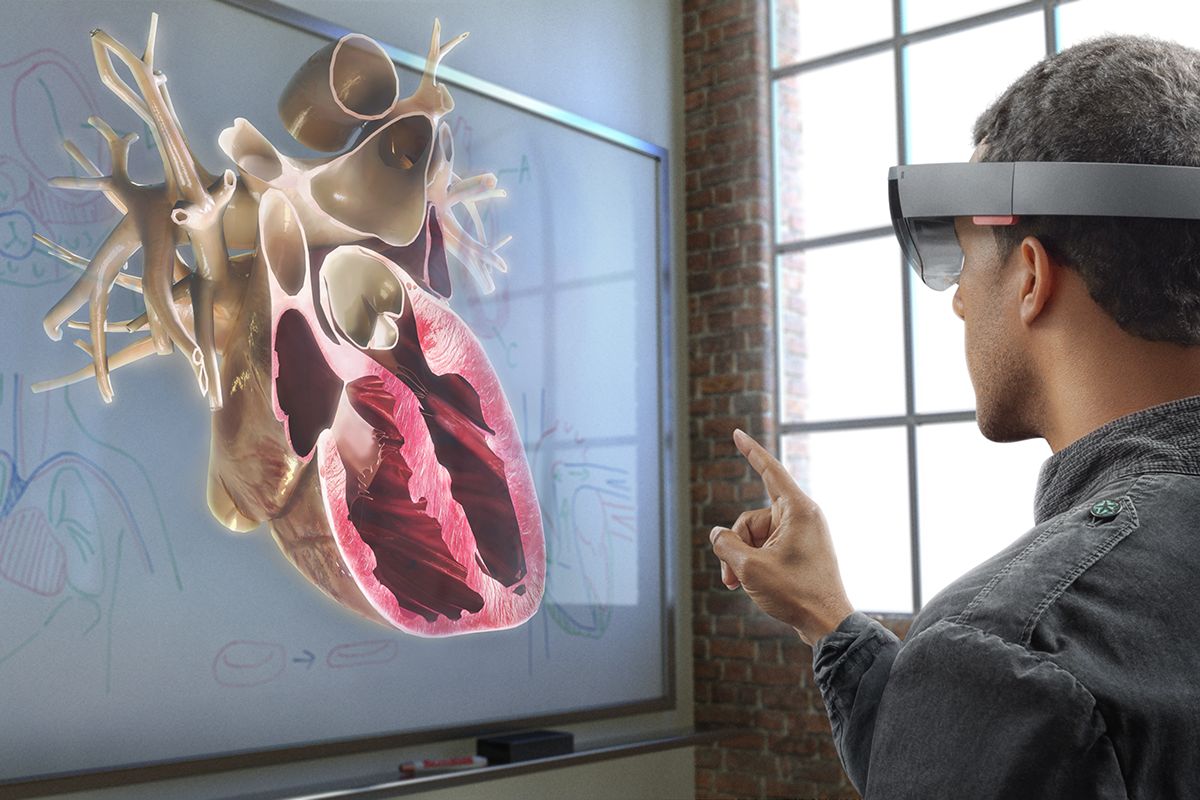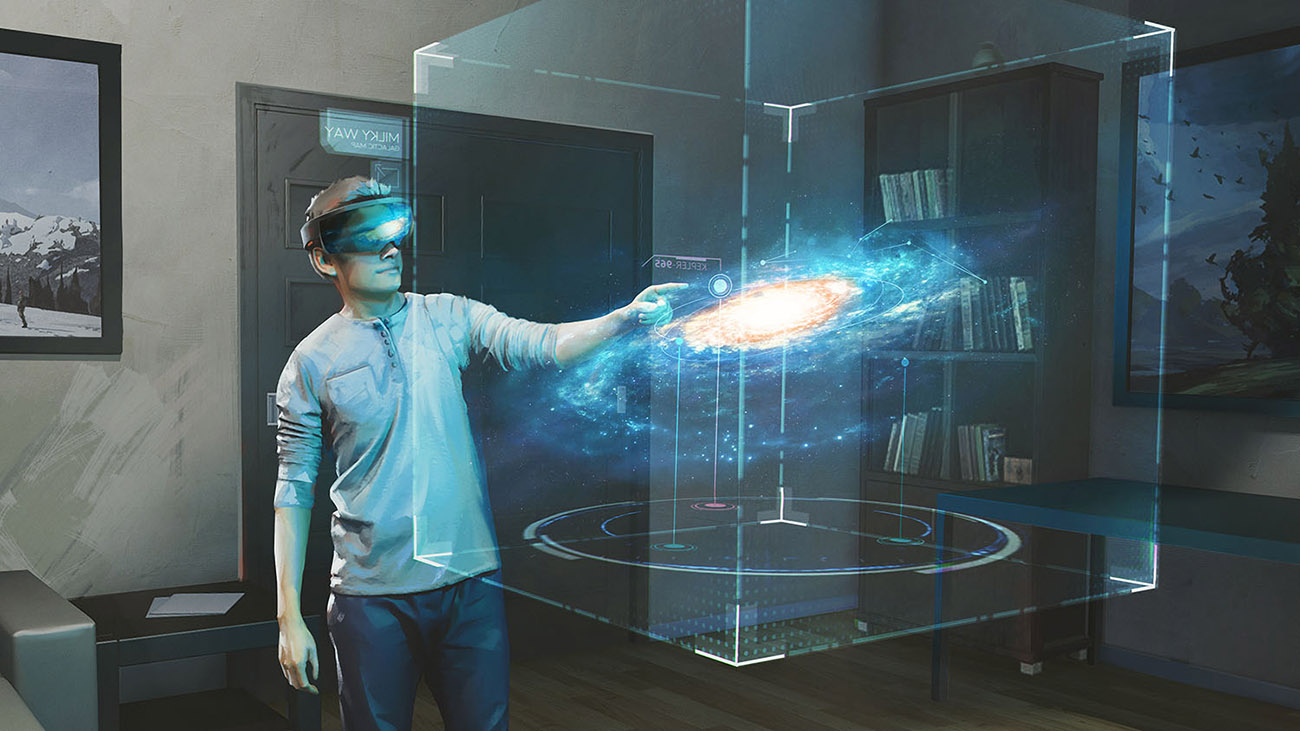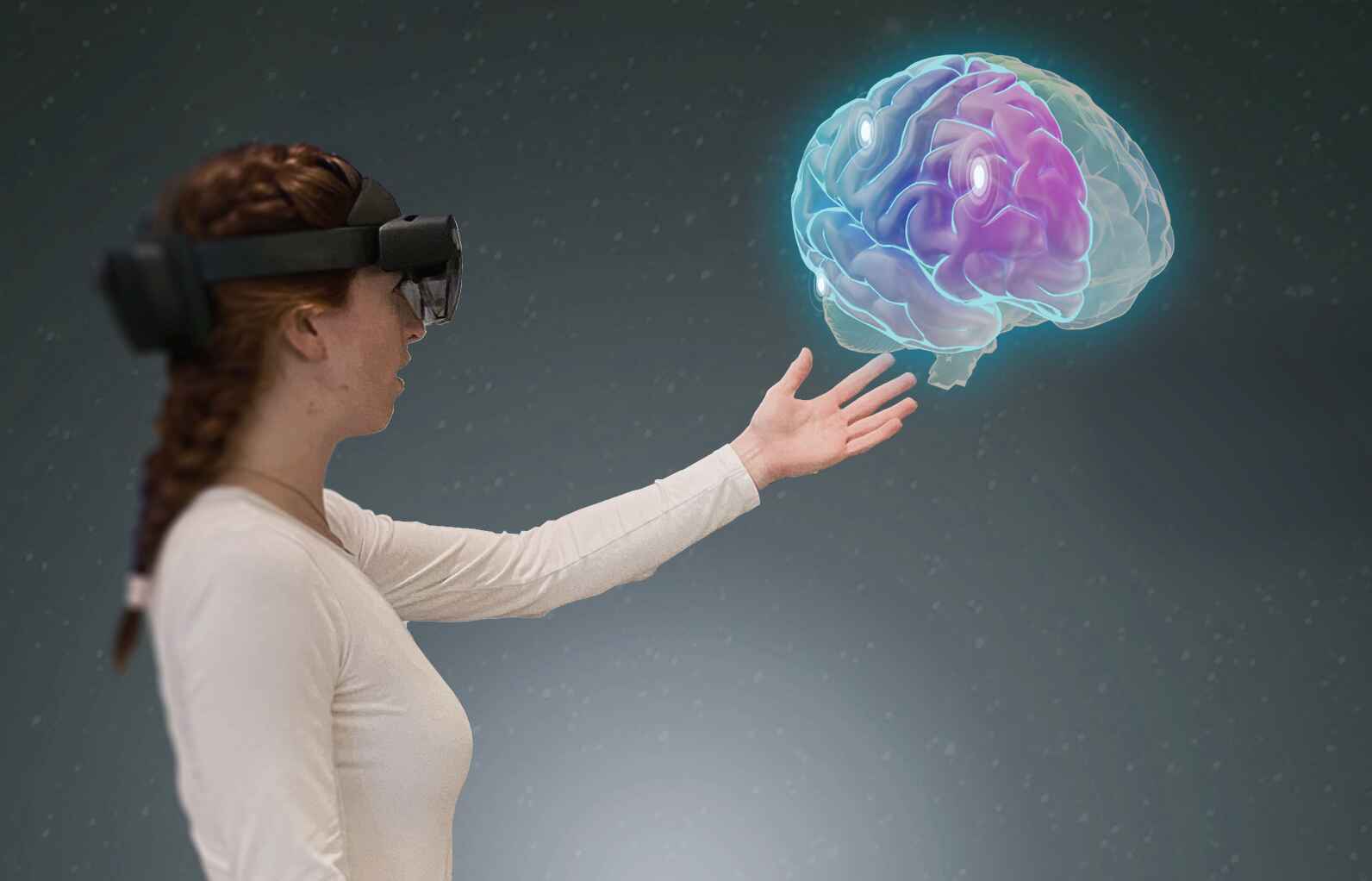Introduction
The Microsoft HoloLens is a groundbreaking mixed reality device that has revolutionized the way we interact with technology. With its unique combination of augmented reality and virtual reality, the HoloLens has opened up exciting possibilities for various industries, including gaming, education, and enterprise solutions.
Initially unveiled by Microsoft in 2015, the HoloLens generated a lot of buzz and anticipation. It promised to provide a truly immersive and interactive computing experience by overlaying digital content onto the real world. The HoloLens gained attention for its ability to blend the physical and digital realms seamlessly.
With the HoloLens, users can interact with holograms, visualize data in 3D, and even transform their surroundings into virtual landscapes. The device features advanced sensors, cameras, and speakers that enable users to see and hear virtual objects as if they were physically present in their environment.
The HoloLens Development Kit, released alongside the first-generation HoloLens, allowed developers to create their own holographic apps and experiences. This opened up a world of possibilities for businesses and individuals to leverage the HoloLens technology to solve real-world problems, enhance productivity, and entertain users in new and engaging ways.
Since its initial release, Microsoft has continued to innovate with the HoloLens, culminating in the release of the HoloLens 2. This highly anticipated sequel to the original HoloLens brought significant improvements, including enhanced field of view, improved comfort, and more advanced hand and eye tracking.
In the following sections, we will delve deeper into the evolution of the Microsoft HoloLens, exploring its development, release, and its impact on various industries. So, let’s embark on this journey to uncover the fascinating world of the Microsoft HoloLens and the mixed reality revolution.
What is the Microsoft HoloLens?
The Microsoft HoloLens is a cutting-edge mixed reality device that blends the physical and digital worlds. Unlike virtual reality headsets that completely immerse users in a virtual environment, the HoloLens overlays holographic content onto the real world, creating a unique augmented reality experience.
Powered by Windows 10, the HoloLens features advanced sensors, cameras, and speakers that enable users to interact with holograms and digitally manipulate their surroundings. Through a combination of gesture controls, voice commands, and eye tracking, users can navigate the mixed reality space and interact with digital content as if it were physically present.
The HoloLens is not just a device for entertainment; it has vast potential across a wide range of industries. In architecture and construction, for example, architects can visualize 3D models of buildings, make real-time modifications, and explore how different designs will look in the physical world. This allows for more efficient planning and collaboration among stakeholders.
In healthcare, the HoloLens can revolutionize medical training and improve patient care. Surgeons can use the device to access vital patient information during procedures, overlaying data onto their field of view without the need to turn away from the operating table. Medical students can also learn anatomy and practice procedures in a virtual environment, enhancing their skills before stepping into the operating room.
The HoloLens is also making waves in the world of gaming. With its ability to map physical spaces and blend them seamlessly with digital content, users can transform their living rooms into virtual battlefields or engage in immersive storytelling experiences. The HoloLens opens up a new dimension of gaming where the boundaries between the physical and digital worlds blur.
Furthermore, the HoloLens has proven to be an invaluable tool in the enterprise sector. Companies can use the device to create interactive, 3D presentations, improving communication and collaboration among teams. Field technicians can access remote assistance and step-by-step instructions, enhancing their productivity and reducing costly errors.
In essence, the Microsoft HoloLens represents a paradigm shift in how we interact with technology. It brings the digital world into our physical reality, offering endless possibilities across industries. As the HoloLens continues to evolve and improve, its impact will only grow, shaping the way we work, learn, play, and experience the world around us.
The HoloLens Development Kit
Alongside the release of the first-generation HoloLens, Microsoft introduced the HoloLens Development Kit, empowering developers to create their own holographic applications and experiences. This dedicated kit provided the necessary tools and resources to harness the power of mixed reality and explore the full potential of the HoloLens platform.
The HoloLens Development Kit included the HoloLens device itself, along with a set of software tools and APIs that enabled developers to build holographic apps. By leveraging the Windows 10 platform, developers could tap into familiar programming languages like C# and Unity to create interactive and immersive mixed reality experiences.
This development kit offered a range of features and capabilities to drive innovation. Developers had access to spatial mapping, which allowed the HoloLens to scan and understand the physical environment, enabling holograms to interact with real-world objects and surfaces. They could also leverage the device’s advanced sensors, such as the depth camera and inertial measurement unit, to enable precise tracking and spatial understanding.
With the HoloLens Development Kit, developers could create holographic apps that seamlessly integrated with other Windows 10 devices and services. This opened up opportunities for cross-platform experiences and interactions, enabling users to transition seamlessly between their HoloLens, PC, and mobile devices.
Microsoft also provided extensive documentation, tutorials, and sample code to guide developers through the process of creating holographic apps. This support ecosystem fostered a vibrant developer community that shared knowledge, insights, and experiences to push the boundaries of what was possible with the HoloLens.
Through these development efforts, a wide range of holographic applications emerged. From interactive educational experiences to virtual tours of architectural designs to engaging entertainment experiences, developers brought their creative visions to life on the HoloLens platform.
The HoloLens Development Kit played a crucial role in establishing the foundation for the future of mixed reality. It enabled developers to experiment, learn, and innovate, driving the evolution of the HoloLens and expanding its capabilities.
As a result of the HoloLens Development Kit, a wealth of immersive and interactive experiences were made available to users, transforming the way we work, learn, and play. It showcased the potential of mixed reality and sparked the imagination of developers worldwide.
The HoloLens Release
The release of the Microsoft HoloLens in 2016 marked a significant milestone in the world of mixed reality. After years of development and anticipation, the HoloLens became available to developers and enthusiasts, showcasing the potential of blending the physical and digital realms.
Microsoft strategically released the HoloLens as a developer edition, recognizing the importance of empowering developers to create experiences and shape the future of mixed reality. This initial release allowed early adopters to get their hands on the device, explore its capabilities, and provide valuable feedback to further refine the technology.
The HoloLens release generated excitement across industries as businesses and individuals began to envision the transformative possibilities of mixed reality. Developers embraced the platform, creating a range of innovative holographic applications that showcased the device’s potential in various sectors.
Although initially targeted at developers, the HoloLens garnered attention and interest from a broader audience. The device’s ability to seamlessly overlay holograms onto the real world captured the imagination of technology enthusiasts and professionals alike.
One of the key strengths of the HoloLens release was its ability to merge the physical and digital worlds in a fluid and intuitive manner. Users could interact with holograms and digital content, manipulating them with gestures, voice commands, and eye tracking. This unique experience set the HoloLens apart from other immersive technologies and opened up endless possibilities for applications in fields such as design, healthcare, and entertainment.
While the initial release of the HoloLens was limited to developers, it served as a stepping stone for Microsoft to refine the technology and gather insights for future versions of the device. The feedback and success of the developer edition paved the way for subsequent iterations and improvements.
The HoloLens release also generated interest from enterprise customers, with companies exploring the potential applications of mixed reality in their workflows. It became evident that the HoloLens had the potential to revolutionize industries such as architecture, manufacturing, training, and remote collaboration.
Overall, the release of the Microsoft HoloLens marked the beginning of a new era in computing, where the boundaries between the physical and digital worlds were blurred. It laid the foundation for the future of mixed reality and showcased the immense potential of this groundbreaking technology.
Mixed Reality and the HoloLens 2
The Microsoft HoloLens 2 builds upon the success of its predecessor by taking mixed reality to new heights. As technology continues to evolve, the HoloLens 2 pushes the boundaries of what is possible in terms of immersive experiences, interaction, and visual fidelity.
Mixed reality, as the name suggests, merges the real world with virtual content, creating a seamless blend of physical and digital elements. The HoloLens 2 takes this concept to another level by improving upon the limitations of the original HoloLens, such as field of view and comfort.
One of the significant improvements of the HoloLens 2 is its expanded field of view, which enables a larger area of the user’s vision to be filled with holographic content. This provides a more immersive and realistic experience, making the holograms appear more integrated into the user’s surroundings.
The HoloLens 2 also boasts enhanced ergonomics, making it more comfortable to wear for extended periods. The design has been refined to reduce the strain on the user’s head and neck, ensuring a more enjoyable and ergonomic experience. The device also features a flip-up visor, allowing users to easily transition between the mixed reality environment and the physical world without fully removing the headset.
Another significant improvement is the HoloLens 2’s enhanced interaction capabilities. The device incorporates more advanced hand and eye-tracking technology, enabling users to interact with holograms more naturally and intuitively. Users can reach out and touch virtual objects, manipulate them with hand gestures, and even make eye contact with virtual characters, enhancing the sense of presence and immersion.
Moreover, the HoloLens 2 introduces a more powerful and efficient processor, resulting in faster and smoother performance. This allows for more complex and detailed holographic experiences, with improved graphics rendering and overall responsiveness.
Microsoft has also emphasized the importance of enterprise applications for the HoloLens 2. The device includes features tailored to the needs of businesses, such as integration with Microsoft Azure and other enterprise software solutions. This enables seamless integration of mixed reality experiences into various workflows and enhances productivity and collaboration in the enterprise environment.
The HoloLens 2 represents a significant leap forward in the world of mixed reality, combining advancements in hardware, interaction, and ergonomics. It opens doors to new and compelling use cases across industries, from design and manufacturing to healthcare and training. With its improved capabilities, the HoloLens 2 sets the stage for a new wave of immersive computing experiences that bring the power of mixed reality into our everyday lives.
HoloLens 2 Features and Upgrades
The Microsoft HoloLens 2 introduces a plethora of features and upgrades that enhance the mixed reality experience and push the boundaries of what is possible with holographic technology. Building upon the foundation set by its predecessor, the HoloLens 2 incorporates advancements in areas such as field of view, interaction, comfort, and enterprise integration.
One of the standout features of the HoloLens 2 is its expanded field of view. Compared to the original HoloLens, the HoloLens 2 offers a significantly larger field of view, providing users with a more immersive mixed reality experience. With a wider perspective, holographic content seamlessly integrates with the user’s surroundings, enhancing the sense of presence and realism.
The HoloLens 2 also introduces improved interaction capabilities. It features enhanced hand and eye-tracking technology, allowing for more natural and intuitive interactions with holograms. Users can now use their hands to manipulate virtual objects with greater precision and accuracy. The device also tracks eye movements, enabling more immersive experiences and even eye contact with virtual characters.
Comfort is another area where the HoloLens 2 excels. The device has been redesigned to offer improved ergonomics, reducing the strain on the user’s head and neck. The weight distribution has been optimized, and the device now features a comfortable, padded headband. Additionally, the HoloLens 2 includes an adjustable visor and a flip-up mechanism, allowing users to easily transition between the mixed reality environment and the physical world.
Enterprises will find the HoloLens 2 even more appealing, thanks to its dedicated features for the workplace. The device integrates seamlessly with Microsoft Azure and other enterprise software solutions, enabling businesses to leverage mixed reality in their workflows. HoloLens 2 provides enhanced security, device management capabilities, and seamless integration with existing infrastructure, making it an ideal choice for enterprise deployments.
The HoloLens 2 also benefits from hardware improvements. It is powered by a more powerful processor, which results in faster performance and improved graphics rendering. This allows for more complex and detailed holographic experiences, enhancing the overall visual fidelity and realism.
In summary, the HoloLens 2 brings a host of impressive features and upgrades to the table. With an expanded field of view, enhanced interaction capabilities, improved comfort, and dedicated enterprise features, the HoloLens 2 sets a new standard for mixed reality experiences. Its hardware enhancements further contribute to delivering more immersive and realistic holographic experiences. The HoloLens 2 stands as a testament to Microsoft’s commitment to pushing the boundaries of technology and enabling users to unlock the full potential of mixed reality.
HoloLens 2 Pricing and Availability
The Microsoft HoloLens 2, with its powerful features and enhancements, is available to both enterprise customers and individual developers. The pricing of the HoloLens 2 reflects its advanced capabilities and the value it brings to various industries.
As of its release, the HoloLens 2 is priced at ,500 for the device-only version. This price includes the HoloLens 2 headset, a carrying case, and a charger. Microsoft also offers additional packages that include enterprise-specific features, such as Azure services and support options, with pricing varying based on the specific requirements of the organization.
It is important to note that the HoloLens 2 pricing includes a commercial use license, making it suitable for businesses and developers who are looking to create and deploy mixed reality solutions in their respective industries. The pricing reflects the significant advancements and improvements made in the HoloLens 2, as well as the potential return on investment that this cutting-edge technology can provide.
In terms of availability, the HoloLens 2 is initially available in select markets, primarily focused on enterprise customers. Microsoft has emphasized its commitment to the enterprise sector, positioning the HoloLens 2 as a game-changer for businesses looking to leverage mixed reality in their operations.
However, Microsoft also recognizes the potential of the HoloLens 2 in other sectors, including education, healthcare, and gaming. With this in mind, Microsoft has plans to expand availability to wider markets and cater to the needs of a broader audience in the future.
Interested customers who want to experience the HoloLens 2 can explore options such as developer kits, which provide an early access version of the device for developers and enthusiasts to start building and testing their mixed reality applications. This allows developers to be at the forefront of innovation and drive the adoption of mixed reality technologies.
As technology continues to evolve, the pricing of the HoloLens 2 may adjust over time, reflecting advancements in hardware, competition, and market demand. Whether in the enterprise sector or for individual developers, the pricing and availability of the HoloLens 2 provide an opportunity for businesses and creators to embrace the potential of mixed reality and unlock new possibilities in their respective fields.
HoloLens 2 in the Enterprise
The Microsoft HoloLens 2 has emerged as a game-changer in the enterprise sector, offering a wide range of applications and benefits across various industries. Its advanced features and capabilities make it an invaluable tool for businesses looking to leverage mixed reality technology in their workflow.
In sectors such as manufacturing, the HoloLens 2 enables engineers to visualize and interact with 3D designs in real-time. This allows for more efficient collaboration, as teams can quickly identify design flaws and make necessary adjustments before proceeding with production. The HoloLens 2 also offers remote expert assistance, allowing technicians to receive real-time guidance and support from experts located anywhere in the world. This reduces downtime and eliminates the need for costly and time-consuming travel.
In architecture and construction, the HoloLens 2 revolutionizes the design process. Architects can create virtual models and overlay them onto physical spaces, providing clients with a realistic visualization of how structures will look and function. This enables more informed decision-making and minimizes the risk of errors or costly changes during the construction phase. Additionally, on-site workers can use the HoloLens 2 for step-by-step instructions, ensuring that projects are completed accurately and efficiently.
The healthcare industry is also benefiting from the HoloLens 2’s capabilities. Surgeons can use the device to access vital patient information during procedures, overlaying medical images and real-time data onto their field of view. This assists in making informed decisions and improves surgical precision. The HoloLens 2 also supports medical training, allowing students to practice complex procedures in a safe and controlled virtual environment before operating on actual patients.
Training and education as a whole are being transformed by the HoloLens 2. In industries such as aviation, mechanics, and first responders, the device enables realistic, hands-on simulations that enhance training effectiveness. Trainees can practice tasks and scenarios in a virtual environment, reducing the risk associated with on-the-job training and increasing competency levels.
Moreover, the HoloLens 2 has become an essential tool for remote collaboration in the enterprise sector. With its ability to overlay holographic content into the physical world, businesses can facilitate virtual meetings and collaborate on projects despite geographical barriers. This allows for greater flexibility and efficiency in decision-making and enhances communication among distributed teams.
Overall, the HoloLens 2’s integration with enterprise solutions and its advanced features make it an invaluable asset for businesses across industries. Its potential to improve productivity, enhance collaboration, and reduce errors is transforming the way companies operate. The HoloLens 2 opens up new possibilities in enterprise applications, empowering businesses to achieve greater efficiency, cost savings, and innovation. As the technology continues to evolve, the HoloLens 2 is set to play an even more significant role in driving digital transformation in the enterprise space.
HoloLens 2 and Gaming
The Microsoft HoloLens 2 has the potential to revolutionize the gaming industry, offering a unique and immersive mixed reality gaming experience. With its advanced features and capabilities, the HoloLens 2 opens up a whole new dimension of gameplay, blurring the boundaries between the physical and virtual worlds.
One of the key advantages of the HoloLens 2 is its ability to map physical spaces and overlay digital content seamlessly. This capability enables users to transform their surroundings into interactive gaming environments. Players can engage in virtual battles taking place in their own living rooms, or explore virtual worlds that blend with their physical surroundings, creating a truly immersive experience.
The HoloLens 2 enhances gameplay through its advanced interaction capabilities. Users can use hand gestures and voice commands to interact with virtual objects and characters, making gameplay more intuitive and engaging. For example, in a fantasy game, players can physically reach out and interact with objects, solve puzzles, and engage in combat with virtual adversaries, creating a deep sense of immersion and realism.
The device’s eye-tracking technology further enhances the gaming experience. It allows for more natural and immersive interactions with virtual characters and objects. In a game, players can make eye contact with virtual characters, analyze their behavior, and have more engaging and empathetic interactions.
The HoloLens 2 also offers multiplayer opportunities with shared mixed reality experiences. Players can physically see and interact with fellow players in the shared mixed reality space. This opens up possibilities for cooperative gameplay, where players can strategize and collaborate in real-time, enhancing social interaction and fostering a sense of camaraderie.
Furthermore, game developers have the opportunity to create innovative gaming experiences exclusively for the HoloLens 2. They can leverage the HoloLens 2’s unique capabilities, such as spatial mapping and holographic rendering, to design compelling and immersive games. The HoloLens 2 platform empowers developers to create interactive and engaging experiences that take advantage of the device’s mixed reality capabilities.
While the gaming industry has embraced virtual reality (VR) and augmented reality (AR) technologies, the HoloLens 2 introduces mixed reality gaming, which offers the best of both worlds. Players can enjoy the immersion of VR while still being aware of and interacting with their real-world environment.
Overall, the HoloLens 2 has the potential to revolutionize the gaming industry, offering gamers a unique and immersive mixed reality experience. With its advanced features, interaction capabilities, and the ability to blend the physical and virtual worlds seamlessly, the HoloLens 2 opens up new dimensions of gameplay and brings gaming to a whole new level of immersion and interactivity. As developers continue to explore the possibilities of mixed reality, we can expect to see even more groundbreaking gaming experiences unfold on the HoloLens 2 platform.
HoloLens 2 and Education
The Microsoft HoloLens 2 has the potential to transform education by providing immersive and interactive learning experiences. With its advanced mixed reality capabilities, the HoloLens 2 offers students and educators a new dimension of education that goes beyond traditional textbooks and lectures.
One of the key benefits of the HoloLens 2 in education is its ability to bring subjects to life through 3D visualization. Students can explore complex concepts, such as human anatomy, by interacting with virtual models of the human body. They can dissect virtual organs, examine structures from different angles, and gain a deeper understanding of how the human body functions.
The HoloLens 2 also enables virtual field trips, expanding the possibilities of learning beyond the classroom. Students can visit historical landmarks, explore archaeological sites, or travel to distant planets, all from the confines of their classroom. This opens up opportunities for immersive and engaging learning experiences that were previously unimaginable.
In addition to visual experiences, the HoloLens 2 fosters active learning and collaboration. Students can participate in virtual experiments, manipulating objects and observing the outcomes in real-time. They can work together on group projects, solving problems and sharing ideas in a shared mixed reality environment. This promotes critical thinking, problem-solving skills, and collaboration, which are essential for future success.
The HoloLens 2 also supports personalized learning. Educators can create customized learning experiences based on individual student needs. The device can adapt to different learning styles and provide interactive content tailored to each student’s pace and level of understanding.
Furthermore, the HoloLens 2 offers opportunities for remote learning and distance education. Students in remote locations can connect with teachers and peers in real-time, participating in virtual classrooms and experiencing collaborative learning without the constraints of geographic boundaries.
Teachers can utilize the HoloLens 2 to augment their instructional methods. Instead of traditional lectures, they can guide students through interactive lessons and real-world simulations. This creates a more engaging and impactful learning environment, sparking curiosity and fostering a love for learning.
By incorporating the HoloLens 2 into education, students can transcend traditional learning methods, embracing a more immersive and dynamic approach to education. As technology continues to evolve, the HoloLens 2 holds the potential to revolutionize classrooms, empowering students and educators to explore, create, and learn in ways previously unimaginable.
Conclusion
The Microsoft HoloLens has undoubtedly made a significant impact on the world of technology and has opened up new possibilities for various industries. With its advanced mixed reality capabilities, the HoloLens has transformed the way we interact with digital content, bridging the gap between the physical and virtual worlds.
From its initial release to the latest HoloLens 2, Microsoft has demonstrated a commitment to pushing the boundaries of what is possible with mixed reality technology. The HoloLens continues to evolve with improved features and upgrades, offering users a more immersive and intuitive experience.
In the enterprise sector, the HoloLens has revolutionized industries such as healthcare, manufacturing, and architecture. It has enhanced collaboration, improved productivity, and optimized workflows through its ability to overlay holographic content onto the real world. Businesses are leveraging the HoloLens to solve real-world problems, increase efficiency, and drive innovation.
In gaming and entertainment, the HoloLens 2 presents a new realm of possibilities. By blending virtual content with the physical environment, gamers can immerse themselves in truly interactive and captivating experiences. The HoloLens 2 opens up opportunities for more engaging storytelling, dynamic gameplay, and multiplayer experiences, transforming the gaming landscape.
In education, the HoloLens 2 offers students a more immersive and interactive learning environment. With its ability to visualize 3D objects and create virtual simulations, students can explore complex concepts in a hands-on manner. The HoloLens 2 promotes active learning, collaboration, and personalized instruction, paving the way for a new era of education.
As the technology continues to evolve, we can expect even more advancements in mixed reality and the HoloLens. With the ongoing development of new applications and the creativity of developers, the possibilities are endless. The HoloLens is poised to reshape the way we work, learn, play, and experience the world around us.
The Microsoft HoloLens has brought us closer to a future where the physical and digital worlds seamlessly merge. With its ability to overlay holographic content onto reality, the HoloLens has sparked our imagination, enabling us to explore new frontiers and unlock the full potential of mixed reality.







